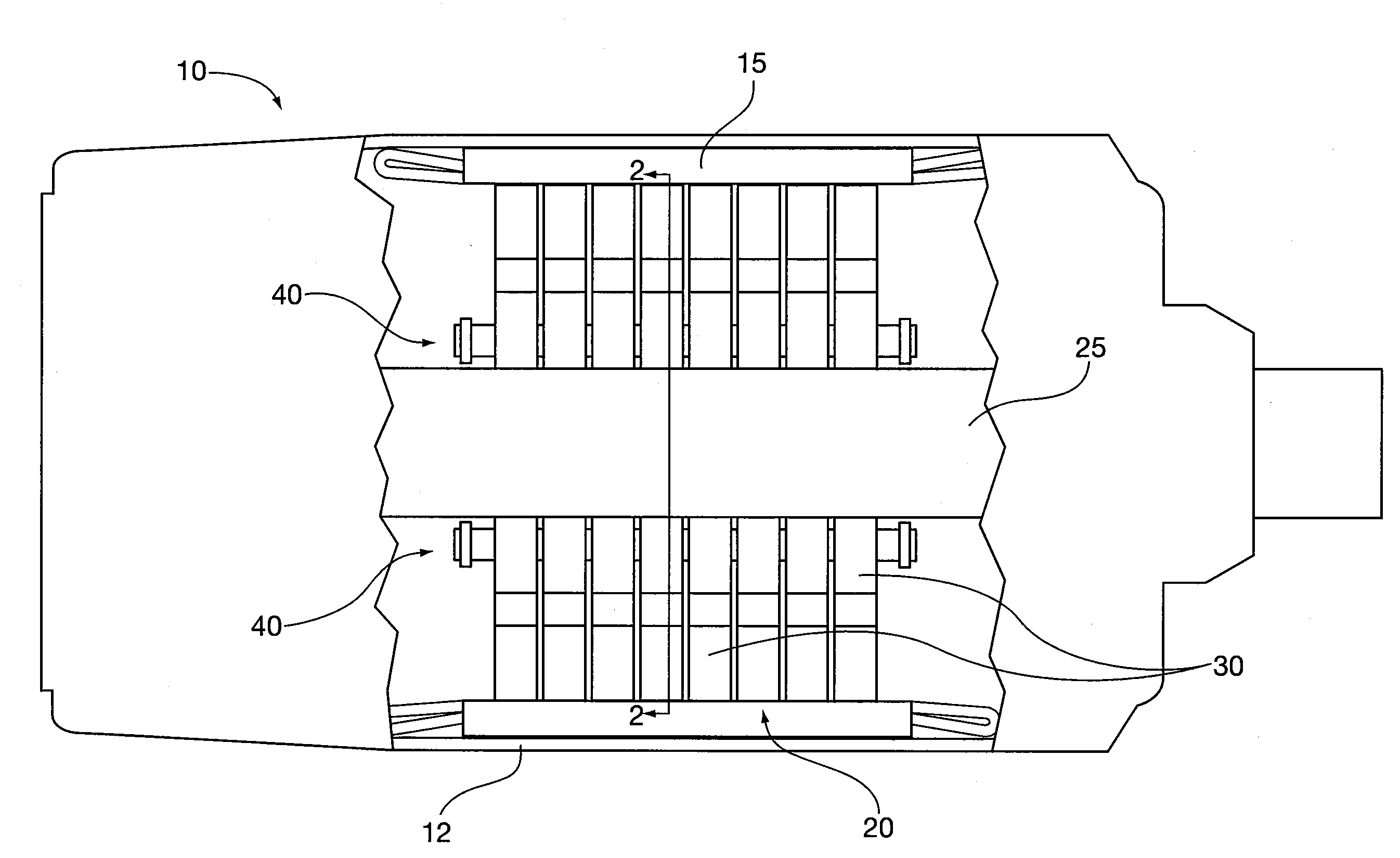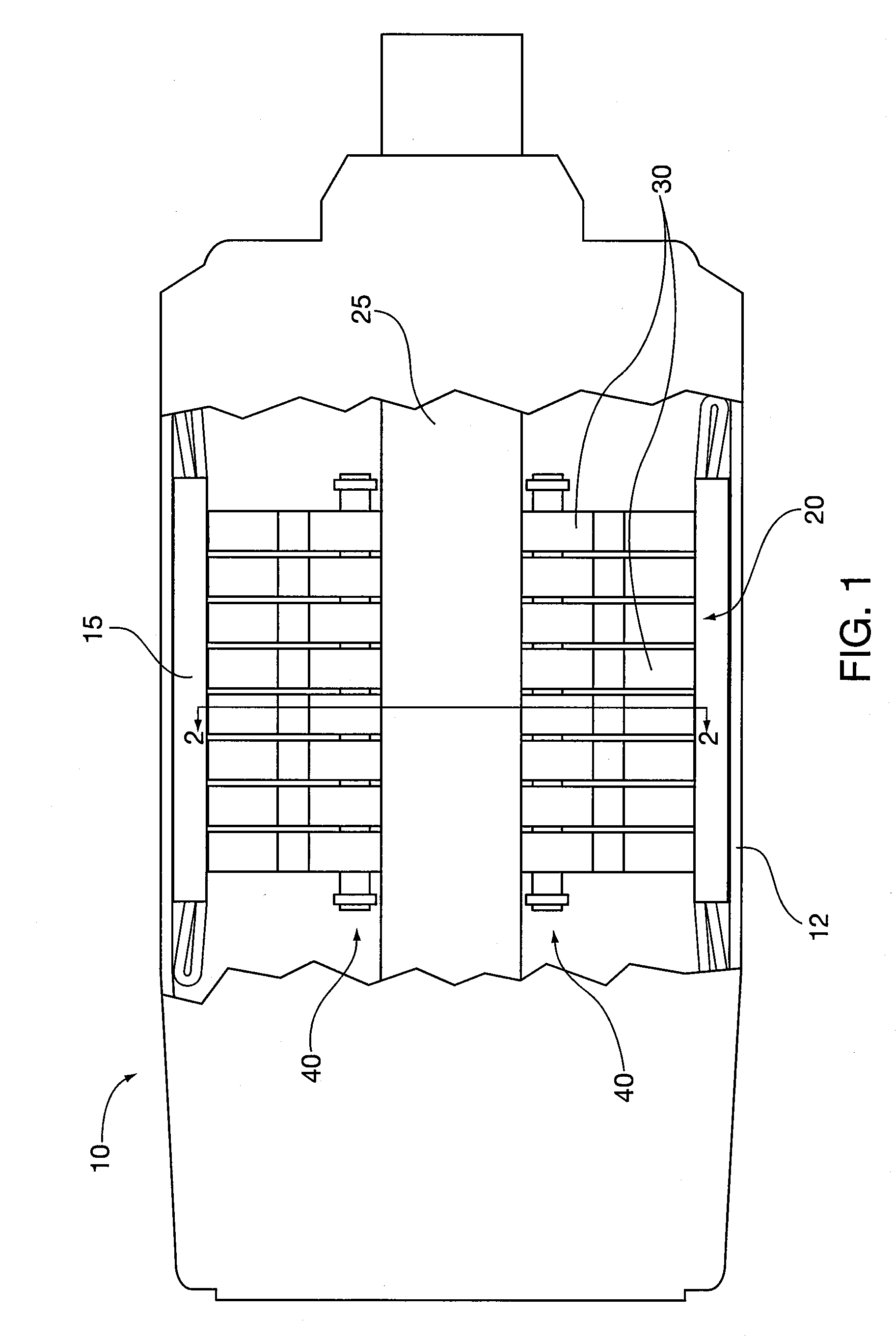Method of Tuning Bending and Torsion Stiffness of Ducted Rotor Core of An Induction Motor
a technology of induction motor and rotor core, which is applied in the direction of static/dynamic balance measurement, magnetic circuit shape/form/construction, instruments, etc., can solve the problems of increasing the critical vibration frequency of the motor, reducing the variance of individual rotordynamic characteristics, and reducing the risk of rotor flexing and flexing
- Summary
- Abstract
- Description
- Claims
- Application Information
AI Technical Summary
Benefits of technology
Problems solved by technology
Method used
Image
Examples
Embodiment Construction
[0030]After considering the following description, those skilled in the art will clearly realize that the teachings of my invention can be readily utilized for tuning rotating mass structural stiffness and vibration excitation frequencies in dynamoelectric machines, and more particularly to methods for tuning rotor stiffness and critical speed vibration in induction motors through the use of axial tie rod arrays.
[0031]Tuning rotor stiffness by varying the rotor tie rod array and compression forces on the rotor stack allows a motor designer to predict the resultant impact on the motor's critical vibration speed caused by the motor physical design and the intended application environment.
[0032]The present invention use of axial tie rod arrays as part of the rotor fabrication process reduces rotor manufacturing variances, potentially leading to more predictable conformity of the finished motor to its vibration specifications.
[0033]FIG. 1 shows an electrodynamic machine induction motor ...
PUM
| Property | Measurement | Unit |
|---|---|---|
| frequencies | aaaaa | aaaaa |
| frequencies | aaaaa | aaaaa |
| frequency | aaaaa | aaaaa |
Abstract
Description
Claims
Application Information
 Login to View More
Login to View More - R&D
- Intellectual Property
- Life Sciences
- Materials
- Tech Scout
- Unparalleled Data Quality
- Higher Quality Content
- 60% Fewer Hallucinations
Browse by: Latest US Patents, China's latest patents, Technical Efficacy Thesaurus, Application Domain, Technology Topic, Popular Technical Reports.
© 2025 PatSnap. All rights reserved.Legal|Privacy policy|Modern Slavery Act Transparency Statement|Sitemap|About US| Contact US: help@patsnap.com



